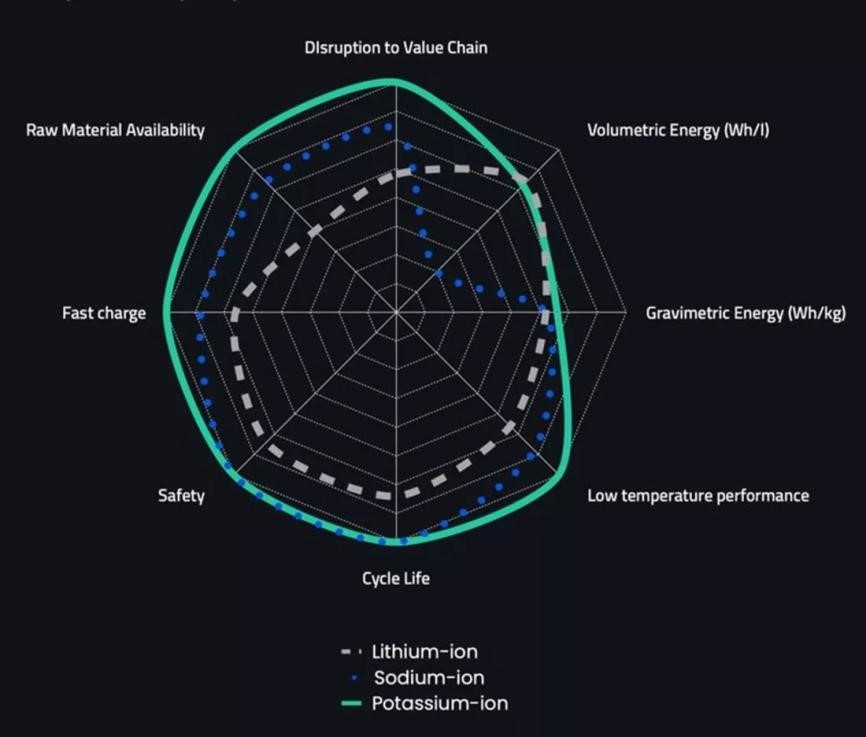In the tide of global energy transition and sustainable development, battery technology, as the core of the new energy field, is undergoing changes at an unprecedented development speed. Although lithium batteries have been the dominant player in the market for decades due to their excellent performance, their limitations are also becoming increasingly prominent. In this article, China Exportsemi Web will try to deeply discuss the technical frontier and market dynamics of mainstream "lithium battery replacement products", and provide a comprehensive industry analysis for practitioners in the semiconductor industry in combination with industry cases.
Industry background
Battery technology is at the heart of new energy vehicles, mobile devices and energy storage systems. With the rapid development of these fields, the requirements for battery performance are also increasing. Although lithium batteries have the advantages of high energy density and long cycle life, their further development is limited by the uneven geographical distribution of resources, cost issues and safety concerns. As a result, the industry is looking for alternative technologies to achieve a balance between performance and cost.
An overview of lithium battery alternatives
Sodium-ion batteries, potassium-ion batteries, solid-state batteries, and hydrogen fuel cells are currently highly discussed lithium battery replacement products, each of which has its own unique advantages and challenges.

Figure: Comparison of the advantages and disadvantages of the four major lithium battery substitute products

Figure: Comparison of indicators of lithium-ion batteries, sodium-ion batteries and potassium-ion batteries
Strengths and Challenges Analysis
The following is an in-depth analysis of the above alternative technologies, which we will analyze and discuss in more depth with specific cases within the industry:
1. Sodium-ion batteries
Sodium-ion batteries are attracting attention due to their low cost and high safety. As one of the world's leading battery manufacturers, CATL's breakthrough in sodium-ion battery technology not only reduces production costs, but also improves the safety and stability of batteries. The abundance of sodium in the earth's crust is about 1,000 times that of lithium, which gives sodium-ion batteries a significant advantage in the supply of raw materials. For example, the application of sodium-ion batteries in the energy storage market, especially in large-scale energy storage projects, is particularly cost-effective.
2. Potassium-ion batteries
Group1's potassium-ion batteries are a rising star in the industry due to their high energy density. The energy density of this battery reaches 160-180Wh/kg, which is comparable to lithium batteries currently on the market, and may even be better in some applications. However, as an emerging technology, potassium-ion batteries still have a long way to go in terms of manufacturing processes, supply chain construction, and market acceptance. In order to achieve commercialization, Group1 needs to further validate the reliability and economics of its products and establish partnerships with potential customers.
3. Solid-state batteries
Toyota's investment and R&D in solid-state battery technology indicates the potential of this technology in the future battery market. Solid-state batteries are seen as strong contenders for next-generation battery technology due to their high safety and higher energy density. Compared to traditional liquid electrolyte batteries, solid-state batteries are thermally stable, reducing the risk of thermal runaway. However, the commercialization of solid-state batteries still faces challenges such as high manufacturing costs and electrode-electrolyte interface compatibility. Toyota is addressing these issues through ongoing research and development, and plans to commercialize solid-state battery technology in the next few years.
4. Hydrogen fuel cells
Hyundai's NEXO hydrogen fuel cell vehicle is a microcosm of the application of hydrogen energy technology. With its excellent range and zero-emission characteristics, the NEXO model demonstrates the potential of hydrogen fuel cells in the field of clean energy vehicles. Hydrogen fuel cells produce energy through the electrochemical oxidation of hydrogen, producing only water in the process, and are a truly clean energy solution. However, the technology for storing and transporting hydrogen energy is not yet mature, and building hydrogen infrastructure requires huge investments. In addition, the production cost of hydrogen and the construction of distribution networks are also key factors restricting the widespread application of hydrogen fuel cells.
Predictions for the hegemon of battery technology in the future
The dominance of next-generation battery technology will be based on multiple dimensions such as technology maturity, cost-effectiveness, market acceptance, environmental impact and policy support. Solid-state batteries are widely favored due to their high safety and energy density, but their commercialization needs to overcome cost and interface issues. Sodium-ion and potassium-ion batteries have breakthrough potential in specific application areas due to their resource advantages and cost-effectiveness. As a representative of clean energy, the long-term development of hydrogen fuel cell depends on the establishment and improvement of hydrogen energy network.
Epilogue
The future of battery technology is uncertain, but innovation and collaboration will be key to moving the industry forward. Practitioners in the semiconductor industry need to pay close attention to technological progress, and at the same time actively participate in the R&D and industrialization of new battery technologies to grasp the new opportunities for the development of the industry. With the global pursuit of clean energy and sustainable technology, the development of next-generation battery technology will bring unprecedented opportunities and challenges to the semiconductor industry.






